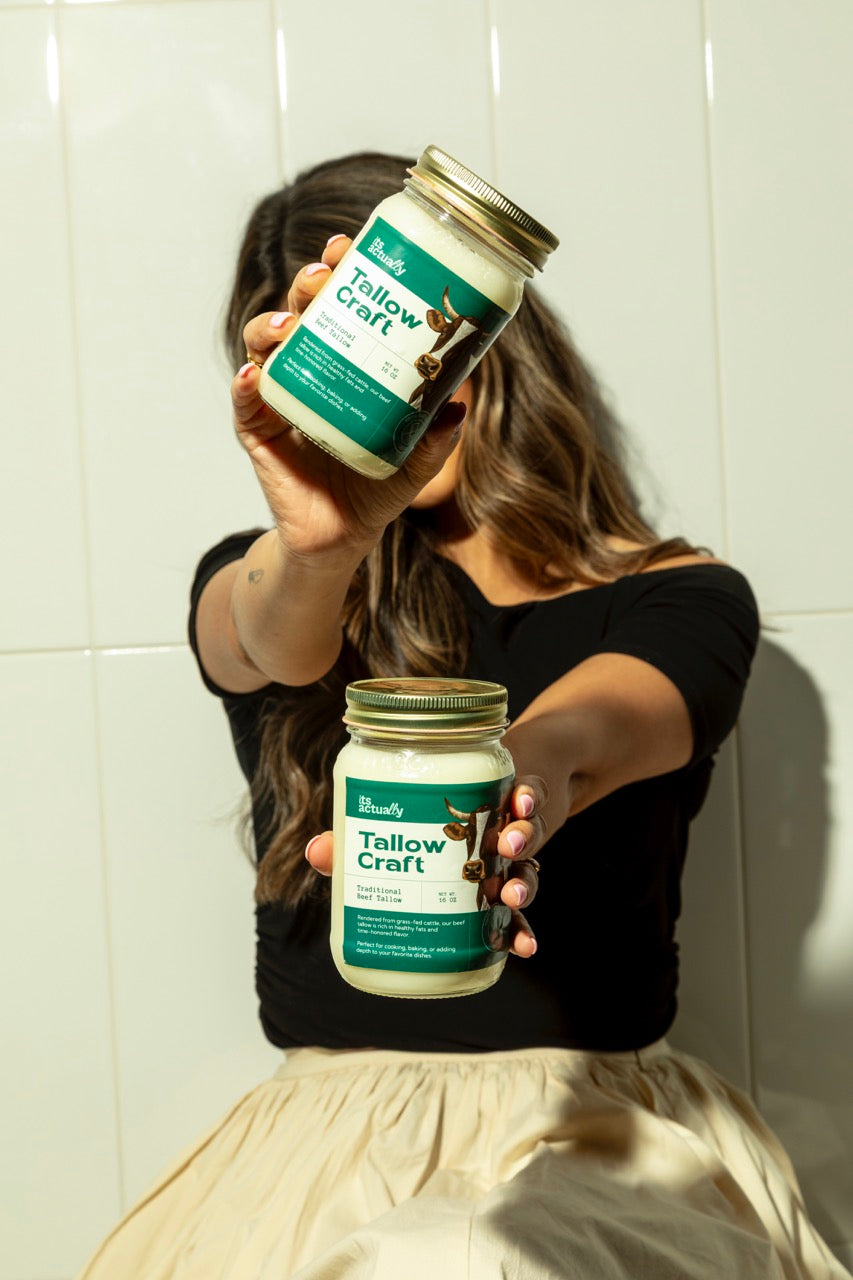Fat & Broth: Why the “Floating Layer” Isn’t Bad

If you’ve ever picked up a jar of Its Actually broth and noticed that little creamy layer on top, I know what you’re probably thinking: “Wait, what’s this? Did my broth go off? Should I scoop it out?”
Let me stop you right there. Breathe. Put that spoon down. Because what you’re looking at is not only completely normal - it’s actually one of the most magical parts of real broth.
The Floating Truth
When you make broth the way our grandmothers did - with bones, connective tissue, and time - the fat from the bones naturally renders out and rises to the top. And when you do it that way, the natural fat from the bones rises to the top once the broth cools.
In food-speak, this is tallow (if it’s from beef) or schmaltz (if it’s chicken). And in how our grandmas would say it’s “the good stuff.”
Why? Because unlike the shiny, clear “broths” you see on supermarket shelves that have been stripped down and filtered until they taste like slightly salty water, this floating layer on your Its Actually jar is proof that the broth is the real deal. It means the bones had something to give, and you’re getting the full spectrum of nourishment - not the watered-down version.
Fat Isn’t the Villain
I get it. For years we were told fat is the bad guy. Low-fat yogurt, fat-free everything, oil sprays, etc. But science (and tradition) has moved on. Fat is essential. It carries flavor, gives your body energy, and supports brain health. For babies and kids especially, natural animal fats are crucial for development.
So when you see that fat cap in our broth jar, don’t panic - if anything be relieved. That’s collagen, minerals, and fat-soluble vitamins hanging out together in harmony. It’s nature’s way of saying: “Hey, I made this nourishing package deal for you. Enjoy.”
How to Use (or Not Use) the Fat
Now, do you have to drink it as is? Nope.
You can:
-
Sip it straight: warm it up, stir, and drink. You’ll hardly notice it’s there once melted.
-
Scoop some off: if you prefer a lighter broth, skim a bit and save it for cooking. Use it like you’d use butter or oil - sauté veggies, fry an egg, even roast potatoes.
-
Keep it all in: reheat it with the fat intact and let it enrich whatever you’re cooking (soups, stews, risotto, curries, etc.), making the texture more silky and the flavor deeper.
Basically, you’re in control. But either way, it’s a feature, not a flaw.




